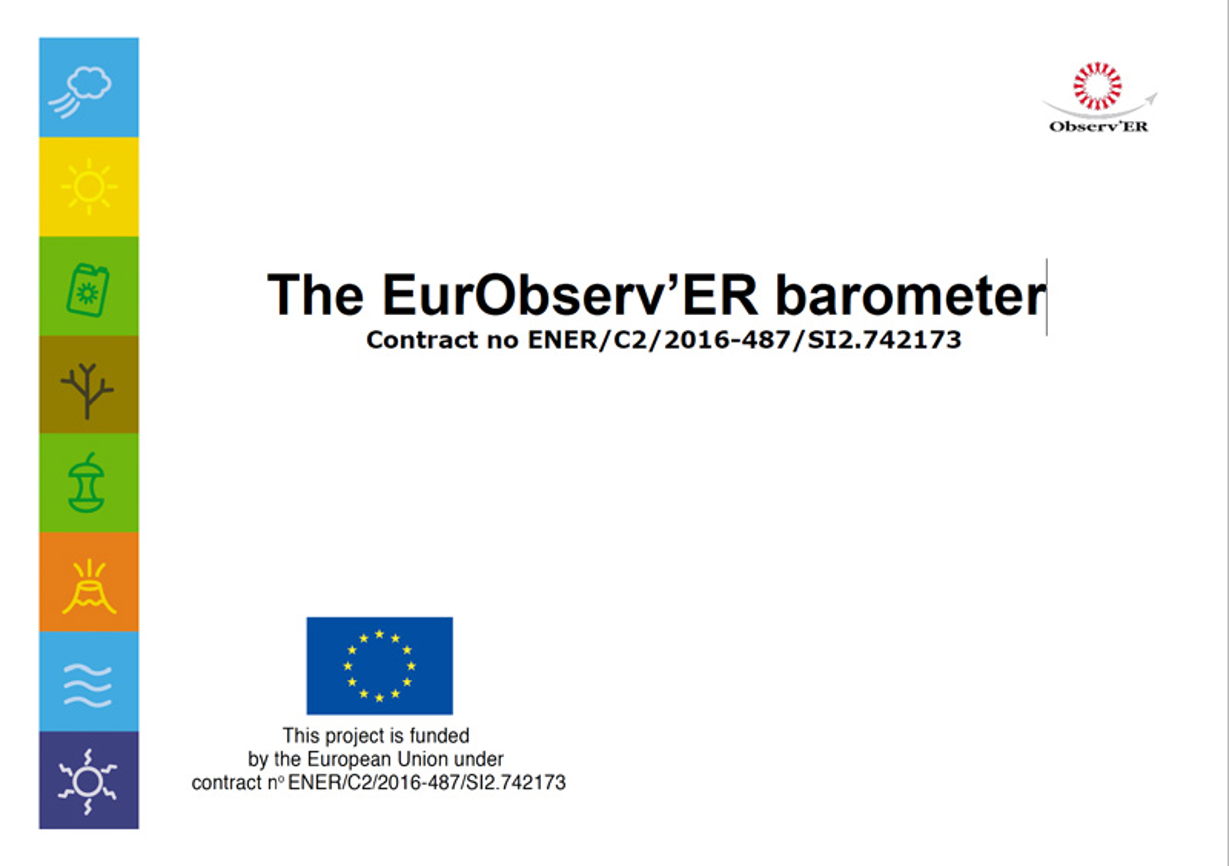EurObserv'ER
Description
By tracking the EU Member States' progress toward the 2020 RES directive objectives, EurObserv'ER contributes to the implementation of EU policy to increase the share of RES in aggregate final energy consumption. This initiative will expand the scope of indicators and analysis to include the incorporation of Croatia and the provision of a comprehensive set of investment indicators. In fact, due to the economic crisis, public expenditure on RES development is decreasing in a number of Member States; therefore, the EurObserv'ER team seeks to encourage private investment in RES sectors. Thus, it provides a reactive measurement instrument that bridges the gap between the end of the year and the publication of official statistics.
The EurObserv'ER barometer is an autonomous instrument that measures the development of renewable energies in each European Union member state. EurObserv'ER generates a series of metric-based indicators for the energy, technology, and economic sectors. Every two months, a market report (barometer) for a specific renewable energy sector is released. Ten renewable energy technologies (wind power (onshore and offshore), photovoltaics, solar thermal, CSP (concentrated solar power), biogas, solid biomass, biofuels and renewables in transportation, geothermal energy, heat pumps, hydro power, waste and ocean energy) are covered by energy and installation data that is less than one year old.
It publishes multiple reports annually, one for each sector: photovoltaic, wind energy, solid biomass, hydro, solar thermal, concentrated solar power, ocean energies, geothermal energy, biofuels, biogas, and solid refuse. These studies are known as "Barometers," such as "Biofuels Barometer 2013." These barometers summarize, using both technical and socioeconomic indicators, the status of the energy sector in each EU member state. Additionally, it publishes a yearly report on the status of renewable energies in Europe.

Gallery

Classifications
Scale of implementation
EurObserv'ER's objective is to provide a synthetic and a very reactive picture of the energy, industry and policy trends observed in the EU 28 Member States for each RES sector.
Type
EurObserv’ER’s website provides all barometers, data, RES policy reports and case studies.
Phase of solution
EurObserv'ER provides a synthetic and reactive picture of the energy, industry and policy trends observed for each RES sector. Thus, it gives a reactive measurement tool that makes up for the gap between the year end and the time when official statistics are released. It works as a support to the fulfilment of the EU policy to develop the RES share of gross final energy consumption.
Target audience
EurObserv’ER’s indicators and data are utilized by national policy makers, industry players, financers, developers, research consultancies, RES associations, chambers of commerce, etc.
Key features-functionality
-
Monitor and Assess Renewable Energy Sectors: The EuroObserver Barometer serves as a monitoring tool to track the progress and development of renewable energy sectors within the European Union. This likely includes gathering data, conducting research, and analyzing trends related to renewable energy sources such as wind, solar, hydro, and biomass.
-
Evaluate RES Development objectives: It assesses the progress of renewable energy sources (RES) in the EU in relation to the objectives set by the European Commission for the year 2020. These objectives include targets for renewable energy production, emissions reduction, and energy efficiency.
-
Disseminate Findings: The EuroObserver Barometer aims to share its research findings and assessments with a broader audience. This dissemination could take the form of reports, publications, articles, or press releases. The target audience includes European journalists and energy stakeholders, which could encompass policymakers, industry representatives, and environmental organizations.
-
Web Accessibility: It seems that the EuroObserver Barometer places a strong emphasis on accessibility, allowing all web visitors to obtain the barometer's information.
References & Sources for Further Reading
- EurObserv’ER’s official website: https://www.eurobserv-er.org/
- Wikipedia the free Encyclopedia: https://en.wikipedia.org/wiki/EurObserv%27ER
